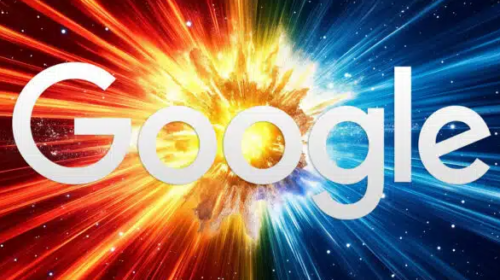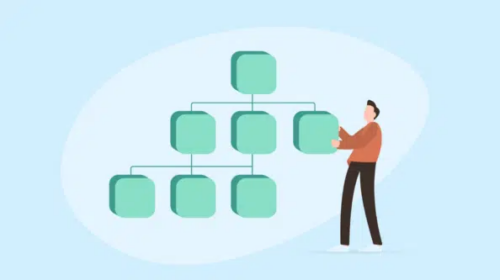Back to basics: What does ‘long-tail’ keyword really mean?
The definition of long-tail keywords is not synonymous with the number of words typed into the search query, but rather the search volume they produce. Here’s how it works.
But this kind of thinking is technically wrong.
So, why are they dubbed “long-tail” keywords? It is a common misconception that “long-tail” keywords represent the number of words used in the phrase. After observing a great conversation between industry leaders in the SEO Signals Lab Facebook group about this topic, I was compelled to write about what I observed.
The bulk of searches people type into Google are specific and tailored precisely to what the user is looking to find. Because of this, the search volume is usually a lot lower. The origins of the name can be attributed to the search demand graph below. As you can see from the illustration, the extremely long tail of the search demand graph represents these highly-focused search queries and thus came the origins of the long-tail keyword name.

Where it all began
The “Long Tail” concept first gained notoriety when it was introduced to the masses by Chris Anderson, author of “The Long Tail: Why the future of business is selling less of more.” It’s a common SEO practice to target keyword phrases with more words because they’re typically easier to rank for and bring targeted traffic with specific intentions. Keyword phrases with fewer words generally are more competitive and the intent is splintered.
You probably think that’s why they’re long-tailed because they have more words in the phrase.
Typically phrases that have lower search volume tend to have more words. As a result, this definition became skewed over time, and people began correlating long-tail with the number of words used in the phrase rather than the search volume.
Let’s look closer at the search demand curve
According to the Search Demand Curve, illustrated below, 70 percent of all searches performed online consist of long-tail keywords. That means popular search terms that most businesses mistakenly focus on, only account for approximately 30 percent of total web searches. As you can see, the Y-axis is representative of the “# of monthly searches,” and not the “# of words.”

Example: Gym Bag
To illustrate this concept further, we looked into “gym bag” and the following five related search queries:
- Gym bag
- Sports bag
- Small gym bag
- Gym bag for men
- Gym bag for women
If we were to operate under the mindset that the number of words directly correlates to search volume, then the above keywords are listed in order. However, if we accurately analyze each of these keywords and their corresponding search volume, they would be ordered from highest to lowest as follows:
- Gym bag
- Gym bag for women
- Small gym bag
- Sports bag
- Gym bag for men
The search demand curve here, as with any niche topic you analyze, shows a consistent split between short and long-tail keywords as demonstrated in the list above. Once again, this proves that the definition of long-tail keywords is not synonymous with the number of words typed into the search query, but rather the search volume they produce.
If a particular niche has a total search volume of 100,000 and is accompanied by 1,000 keyword opportunities, then by this logic, an estimated 20 to 30 percent of them will be short-tail keywords, while long-tail keywords will account for the remaining 70 to 80 percent.
A study conducted by Hitwise in 2008 confirmed this theory, studying an estimated 14 million search terms over a three-month time frame. After drilling down the top 1,000 search terms, the following conclusion was made: “if you had a monopoly over the top 1,000 search terms across all search engines (which is impossible), you’d still be missing out on 89.4 percent of all search traffic.” In summation, to construct a strategic, successful SEO strategy for your business, you should be focusing on the 70 to 80 percent of keywords that are housed in the long-tail portion of the search demand curve.
Example: Gain weight
Here’s another example that discredits the myth surrounding the number of keywords included in a search query.
 From the above chart, you can see that the smaller, two-word search produced a lower search volume compared to the larger string of keywords, demonstrating that the number of words is not what defines a long-tail keyword phrase. Similarly, here’s an example of some multi-word phrases that carry a high search volume every month.
From the above chart, you can see that the smaller, two-word search produced a lower search volume compared to the larger string of keywords, demonstrating that the number of words is not what defines a long-tail keyword phrase. Similarly, here’s an example of some multi-word phrases that carry a high search volume every month.
![]()
![]()
![]()
![]() The chart above shows that keyword phrases with three or more words can appear on the high search volume end of the curve. Accordingly, a single word or short keyword phrase can land on the long-tail portion of the search demand curve. The important takeaway here is that keyword popularity cannot be defined simply by counting the number of words used in the query.
The chart above shows that keyword phrases with three or more words can appear on the high search volume end of the curve. Accordingly, a single word or short keyword phrase can land on the long-tail portion of the search demand curve. The important takeaway here is that keyword popularity cannot be defined simply by counting the number of words used in the query.
Focus on natural language keywords
A natural language, long-tail keyword strategy can do wonders for your business and there are numerous research tools available to help you hone your SEO game plan. Now that you know the accurate definition of what a long-tail keyword is and how the common misconception came to be, you’ll be on the right track when performing keyword research.





